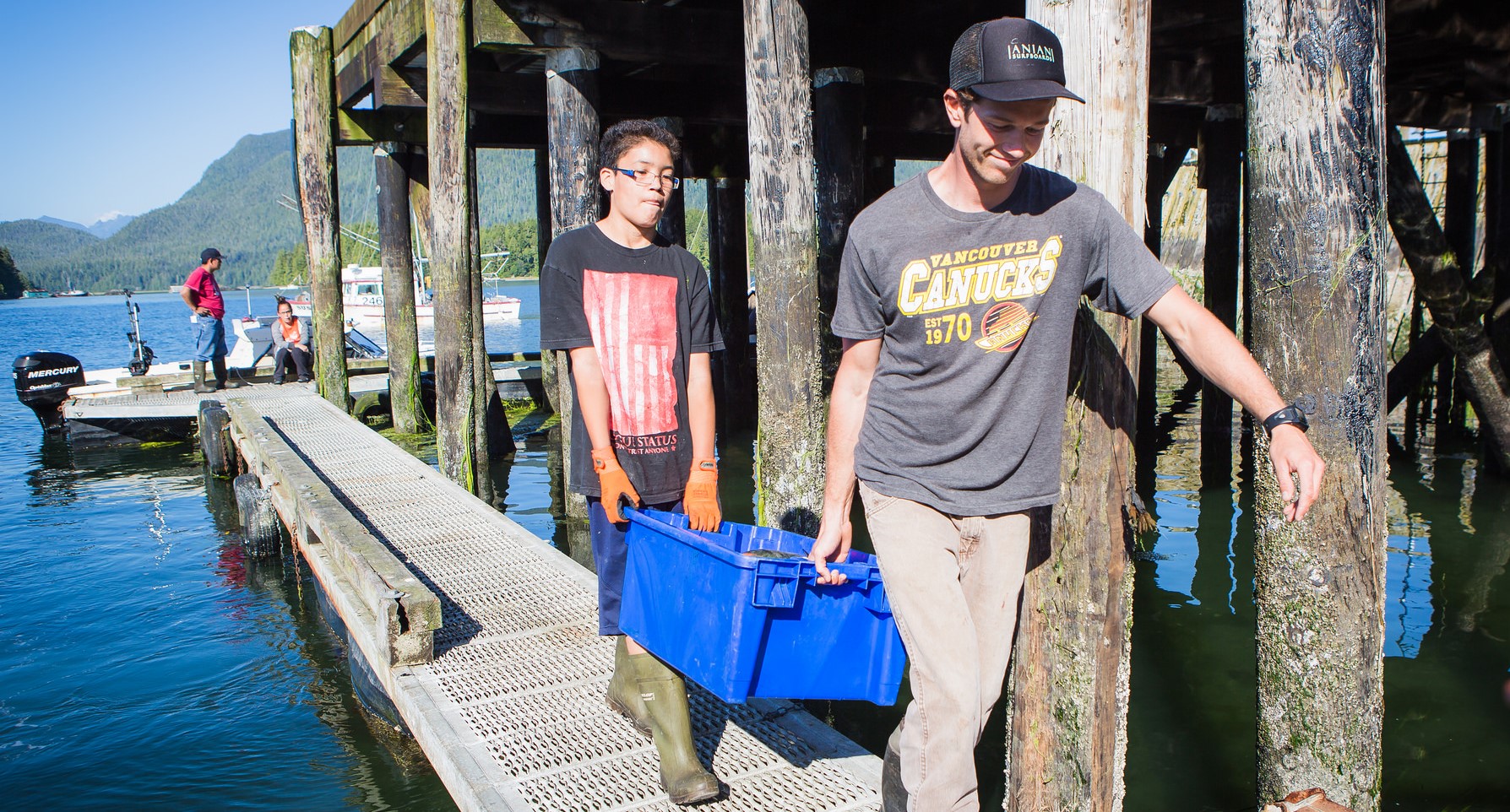
01 Jun The Indicator Tracking Project for T’aaq-wiihak Fisheries: Tools to Measure Success
All fisheries—regardless of where they are located or what they are fishing for—have objectives. They can be as simple as when and where fishers can fish, or more complex, and include objectives to meet other community values besides just catching fish. The T’aaq-wiihak fisheries have a number of socio-economic objectives designed to reflect Nuu-chah-nulth values and priorities. In order to determine if the design and management of the T’aaq-wiihak fisheries are meeting their objectives, the fisheries have to be tracked and evaluated against their objectives. The T’aaq-wiihak fisheries have just completed their first year of social and economic tracking to evaluate the progress of the fisheries.
Uu-a-thluk staff collected data throughout the 2015 T’aaq-wiihak fishing season from fishers and communities. Information was collected through landing data, fishing logbooks, surveys (distributed at the dock, via Facebook, and during fisher meetings), and via communications with fishers, buyers, technical staff, managers, and contractors. A user-friendly report was designed to communicate findings to T’aaq-wiihak fishers, managers, negotiators and Ha’wiih. The information collected is helping the fishery to measure whether what they’re doing is meeting the communities’ objectives for the fishery.
“You need to monitor fisheries to see if the management measures being used are meeting the objectives for the fishery,” said Danielle Francis, T’aaq-wiihak fisheries technician. Examples of indicator data that was collected during the fishing season includes Nuu-chah-nulth community participation, quantity of fish caught, fishing costs (e.g., fuel, repairs), how fishing knowledge is being passed down, and if Nuu-chah-nulth rights-based fisheries are receiving priority over commercial and recreational sectors. T’aaq-wiihak negotiators and Uu-a-thluk staff are optimistic that this data will evaluate if the management measures being used are meeting the objectives of sustainable fisheries while generating revenue for the fishers and the communities.

“There are still significant differences between the fisheries being authorized by DFO and the fishing plans of the Nations that are in line with their preferred means.” Don Hall, Uu-a-thluk Program Manager.
The Ḥaw̓iih and T’aaq-wiihak negotiators acknowledge that the T’aaq-wiihak fisheries to date do not reflect the full fishing interests of the Nations as outlined in the T’aaq-wiihak Fisheries Management Plans. “There are still significant differences between the fisheries being authorized by DFO and the fishing plans of the Nations that reflect their preferred means,” said Don Hall, Uu-a-thluk Program Manager. The Nations reluctantly accepted DFO’s proposed salmon “demonstration” fisheries for a fourth year in 2015 in order to create a limited opportunity for their fishers, and with the hope that small improvements, including the ability to pilot some T’aaq-wiihak management approaches in the fishery, would be forthcoming from DFO.
Following the direction of the Ḥaw̓iih and Nations, Uu-a-thluk and T’aaq-wiihak staff will continue to gather data from fishers and other sources while also revising the T’aaq-wiihak fisheries indicators as needed to integrate lessons learned from the first year of data collection. Uu-a-thluk and First Nations staff will use the indicators to review progress of the T’aaq-wiihak fisheries and consider how increased fisheries access and management in indigenous communities can contribute to sustainable livelihoods and healthy communities for Nuu-chah-nulth. In the long term the tracking tools will indicate where adjustments are needed and whether the fishery is heading in a direction that increases Nuu-chah-nulth participation in the fisheries while also increasing access to aquatic resources. “The indicators tracking program is the start of a long-term monitoring project to provide consistent and measurable information about how well the fishery is reflecting the Nuu-chah-nulth vision, values, and priorities,” said Dr. Hall.
By Dawn Foxcroft
Brief history of the T’aaq-wiihak fisheries
In 2009, a BC Supreme Court decision ruled that five Nuu-chah-nulth Nations (Tla-o-qui-aht, Ahousaht, Ehattesaht, Hesquiaht and Mowachaht/Muchalaht) have Aboriginal rights to harvest and commercially sell any species of fish (except geoduck) found within the court defined Fishing Area. The five Nations collectively adopted the name of the T’aaq-wiihak for their right based fisheries. T’aaq-wiihak means fishing with permission of the Ḥaw̓iih (hereditary Chiefs). Canada has failed over the past six years to negotiate a new fishing regime that accommodates these Aboriginal rights.


